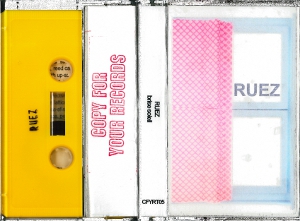
these tracks are being played back through a patch in a random order. the patch also arbitrarily chooses a value for the silence between the tracks (the silence values were devised through an esoteric formula reed came up with that had something to do with up-sampling from 11khz to 24khz). i made this patch so that i wouldn't privilege any of the tracks over the course of time. from my perspective, it's a non-hierarchical arrangement of the lattice motifs; for everyone else it will be a piece of music composed by indeterminate means. perspective matters.
all of the sound material is from pd generated white noise and lattice filter.
thanks reed for the labor, encouragement, and nourishment.
all of the sound material is from pd generated white noise and lattice filter.
thanks reed for the labor, encouragement, and nourishment.